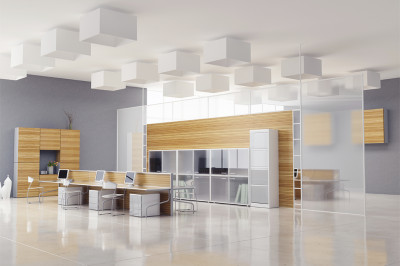The common areas are supposed to be the areas of the building complex that are available to all tenants and their clients, visitors and customers for the convenient operation of the business in the building. The parking facilities, whether a garage structure or surface parking lot, are part of the common areas.
Plus: Brokers don’t work for free | Negotiating the tenant improvement allowance
In most commercial leases, there is a clause addressing parking, some more detailed than others. Office buildings typically use a ratio of a certain number of parking spaces for each 1,000 square feet of rentable area. Aside from cost when negotiating your office lease, making sure you have adequate parking allocated is a matter of critical importance. The landlord, as owner of a commercial building, would have been required after the building’s completion to have normal and necessary parking spaces to allow the building to be utilized for its prospective use.
Also: Six attributes that make a great workplace | Five problems with flexible working
However, the trend today is for more dense office layouts populated by corporate space users. Many buildings, unless they were recently constructed, have strained parking capacity particularly in well occupied buildings. In a market like Houston, where public transportation is not heavily used, employees need spaces to park their cars.
Parking is often negotiable
Subject to market conditions, the cost of parking is typically an area where a landlord is willing to make concessions in the lease negotiations. Depending on your bargaining power and with solid representation, everything from parking allocation, designation of spaces and the cost of reserved and unassigned spaces are negotiable items.
Parking costs for employees can be a significant component to your total cost of occupancy. For example, in downtown markets, where the cost of parking is typically more expensive, this line item can add several dollars per square foot to your annual lease costs. In suburban markets, parking is often less expensive, depending on the market and parking accommodations. The luxury of a covered parking structure to protect your employees from the elements is nice but typically comes with a cost. However, with effective negotiations, some of this cost can be mitigated.
Give the parking garage a test run
Whenever a company is considering its office space options, there is much consideration given to evaluating the building features and particular spaces. But don’t neglect a thorough evaluation of the parking facilities. If you park only in the convenient visitor parking when touring buildings, this will not give you the same experience as when you are a tenant in the building. Visitor parking should be convenient for your customers. But if getting from your office premises to your car adds an extra five or 10 minutes in a particular building option, that needs to be considered in your overall evaluation.
Some building owners on occasion have been known to oversubscribe their parking allocations or fail to adequately enforce restrictions upon tenants who are exceeding their allocations. If you have to spend 10 minutes looking for an available space, this should be a red flag. A thorough assessment of the parking facilities can eliminate issues down the road when you are committed to a 5 or 10-year lease.
The last thing you want is a great office space with parking issues. Your broker should negotiate a detailed parking provision and forewarn you of perceived parking issues in candidate buildings.
Coy Davidson is Senior Vice President of Colliers International in Houston. He publishes The Tenant Advisor blog.

 Coy Davidson
Coy Davidson

 Colliers Insights Team
Colliers Insights Team

 Ron Zappile
Ron Zappile